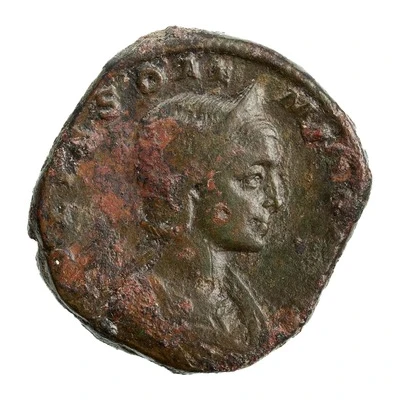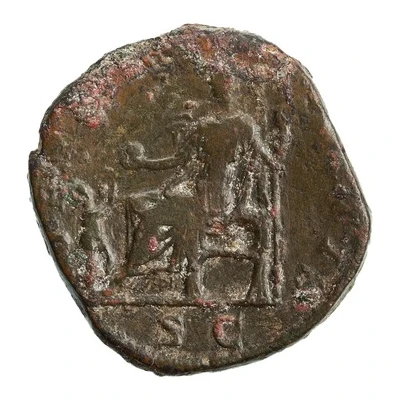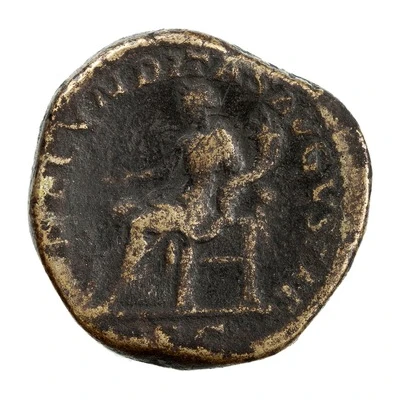Sestertius - Julia Maesa AEQVITAS PVBLICA; Tres Monetae
| Bronze | - | - |
| Issuer | Rome › Roman Empire (27 BC - 395 AD) |
|---|---|
| Emperor | Elagabalus (Sextus Varius Avitus Basianus) (218-222) |
| Type | Standard circulation coin |
| Years | 218-222 |
| Value | Sestertius (⅛) |
| Currency | Antoninianus, Reform of Caracalla (AD 215 – 301) |
| Composition | Bronze |
| Shape | Round (irregular) |
| Technique | Hammered |
| Demonetized | Yes |
| Updated | 2024-10-05 |
| Numista | N#277101 |
|---|---|
| Rarity index | 100% |
Reverse
The Three Monetae, all draped, standing left, each holding scales in right hand and cornucopiae in left hand; at their feet, heaps of metal.
Script: Latin
Lettering: AEQVITAS PVBLICA
Translation:
Aequitas Publica.
Equity of the public.
Comment
Source:Online Coins of the Roman Empire (OCRE)
Interesting fact
The Sestertius coin featuring Julia Maesa, which was minted during the reign of Emperor Elagabalus (218-222 AD), is notable for its depiction of the Roman goddess of justice, Aequitas, on the reverse side. Aequitas is shown holding a scale and a scepter, symbolizing the idea of fairness and equality under the law. This image was particularly significant during Elagabalus' reign, as he was known for his efforts to promote justice and equality throughout the empire. The coin's design serves as a testament to the importance of these values in Roman society and highlights the role of the emperor in upholding them.



